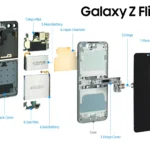Google is launching a lot of fresh accessibility features for its products and services in honour of Global Accessibility Awareness Day (GAAD). These functions are designed to increase the accessibility of Google’s products for people with impairments.
More devices have live captions, include Android tablets
One of the most important new accessibility features is Live Caption, which is being added to more Android devices. For audio material such as podcasts, phone conversations, and video content, Live Caption provides real-time captioning. Those who are deaf or hard of hearing, as well as those who live in loud environments, may benefit from this.
Today is #GlobalAccessibilityAwarenessDay and we're celebrating by announcing new accessibility updates to Google Lookout, Live Caption, Wear OS, Maps, Chrome and more. Learn more about some of our latest updates → https://t.co/BsDvvBWPJC 🧵 ↓ pic.twitter.com/l38Owo2TVU
— Google (@Google) May 18, 2023
Thankfully, Google will begin introducing a new captions box this summer to provide Live Caption to more Android devices, including Android tablets. Also, you’ll be able to write your answer and have it read back to you during phone conversations using Live Caption, which enables you to utilize your keyboard. already accessible on the most recent Pixel smartphones, but it will soon also be available on the Pixel 4, Pixel 5, and other Android phones including the Samsung Galaxy devices.
Find digital images using Google Lookout
Google is also enhancing Lookout, a tool that utilizes your device’s camera to look at an item before using AI to assess and explain what it is pointing at, in order to benefit the blind and low-vision people. This technology will now be able to characterize digital photos, a task that has hitherto been left to the alt text that is added to an image upon upload. Sadly, not everyone includes alt text when they post images online.

“Image Q&A mode” will be the name of the function, which will be a component of the Lookout app. Lookout will be able to identify the photograph and respond to inquiries about it. While this specific function is now in limited beta, Google promises that it will soon be made accessible to more users.
Use Google Maps to locate nearby locations
Google Maps is being changed to make it simpler for people with disabilities to find accessible destinations. By default, maps now include accessible locations, making it simpler for customers to find establishments and other locations that have wheelchair accessibility, accessible parking, and other features that are essential for individuals with disabilities.

On Wear OS, text-to-speech is improved
As Google revealed at I/O, Wear OS 4 is already on the horizon. new text-to-speech experience that Google believes will be quicker and more dependable will be one of the new features that Wear OS will get later this year.
Chrome helps you avoid URL mistakes
On desktop Chrome, you may now identify when you enter an invalid URL and get recommendations for a possible replacement. In the next months, this feature will be made available on mobile, which will be helpful for those who have dyslexia or other language impairments as well as those who are merely prone to mistakes.
A tab grid, bulk actions, and reordering tools have just been added to TalkBack on Chrome for Android, enabling users to manage and organize their browser tabs with ease.
these enhancements demonstrate Google’s dedication to enhancing accessibility in the digital world. Even though I am physically fit, I can imagine utilizing some of these functions to my advantage. It is also quite reassuring to know that features like this will just continue to improve and evolve in the future.







